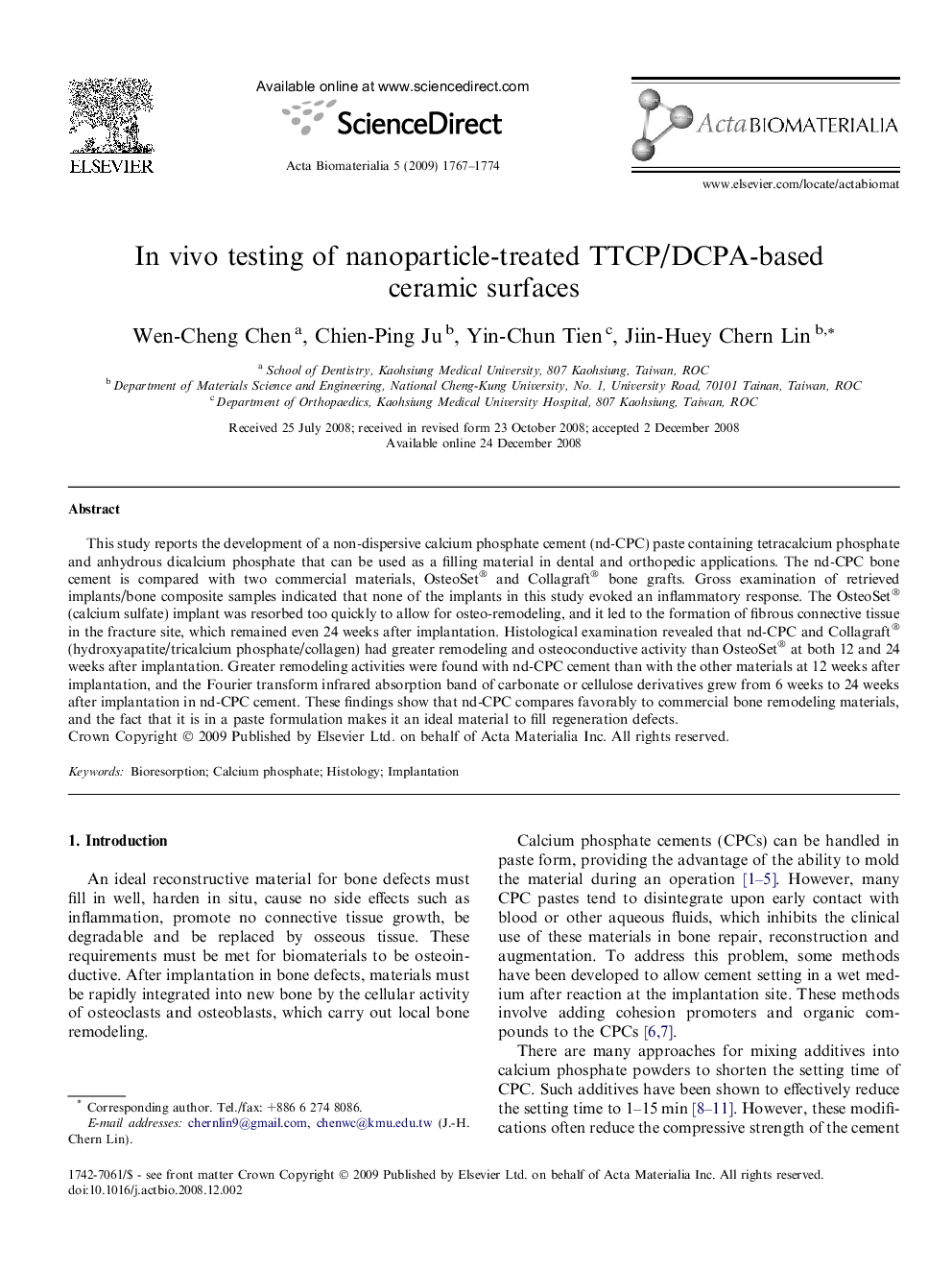| Article ID | Journal | Published Year | Pages | File Type |
|---|---|---|---|---|
| 1333 | Acta Biomaterialia | 2009 | 8 Pages |
This study reports the development of a non-dispersive calcium phosphate cement (nd-CPC) paste containing tetracalcium phosphate and anhydrous dicalcium phosphate that can be used as a filling material in dental and orthopedic applications. The nd-CPC bone cement is compared with two commercial materials, OsteoSet® and Collagraft® bone grafts. Gross examination of retrieved implants/bone composite samples indicated that none of the implants in this study evoked an inflammatory response. The OsteoSet® (calcium sulfate) implant was resorbed too quickly to allow for osteo-remodeling, and it led to the formation of fibrous connective tissue in the fracture site, which remained even 24 weeks after implantation. Histological examination revealed that nd-CPC and Collagraft® (hydroxyapatite/tricalcium phosphate/collagen) had greater remodeling and osteoconductive activity than OsteoSet® at both 12 and 24 weeks after implantation. Greater remodeling activities were found with nd-CPC cement than with the other materials at 12 weeks after implantation, and the Fourier transform infrared absorption band of carbonate or cellulose derivatives grew from 6 weeks to 24 weeks after implantation in nd-CPC cement. These findings show that nd-CPC compares favorably to commercial bone remodeling materials, and the fact that it is in a paste formulation makes it an ideal material to fill regeneration defects.
